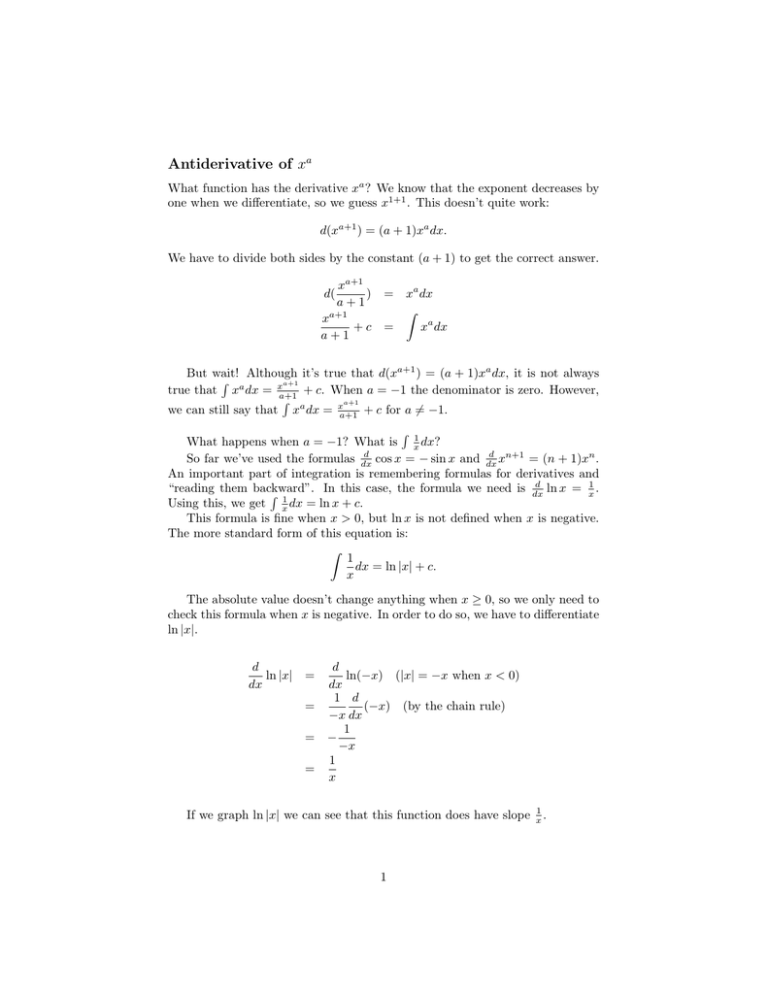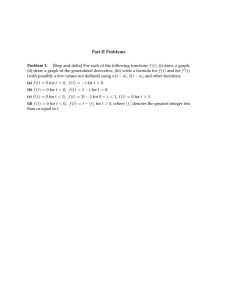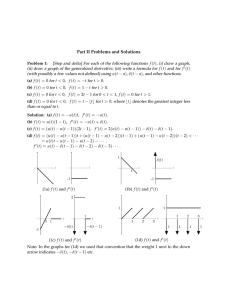Antiderivative of x
advertisement

Antiderivative of xa What function has the derivative xa ? We know that the exponent decreases by one when we differentiate, so we guess x1+1 . This doesn’t quite work: d(xa+1 ) = (a + 1)xa dx. We have to divide both sides by the constant (a + 1) to get the correct answer. d( xa+1 ) a+1 xa+1 +c a+1 xa dx � = xa dx = But wait! Although it’s true that d(xa+1 ) = (a + 1)xa dx, it is not always � a+1 true that xa dx = xa+1 + c. When a = −1 the denominator is zero. However, � a+1 we can still say that xa dx = xa+1 + c for a = � −1. � What happens when a = −1? What is x1 dx? d d n+1 cos x = − sin x and dx x = (n + 1)xn . So far we’ve used the formulas dx An important part of integration is remembering formulas for derivatives and d ln x = x1 . “reading them backward”. In this case, the formula we need is dx � 1 Using this, we get x dx = ln x + c. This formula is fine when x > 0, but ln x is not defined when x is negative. The more standard form of this equation is: � 1 dx = ln |x| + c. x The absolute value doesn’t change anything when x ≥ 0, so we only need to check this formula when x is negative. In order to do so, we have to differentiate ln |x|. d ln |x| = dx d ln(−x) (|x| = −x when x < 0) dx 1 d (−x) (by the chain rule) = −x dx 1 = − −x 1 = x If we graph ln |x| we can see that this function does have slope 1 1 x. Figure 1: Graphs of y = ln(−x) (above) and y � = 2 1 (below). x MIT OpenCourseWare http://ocw.mit.edu 18.01SC Single Variable Calculus�� Fall 2010 �� For information about citing these materials or our Terms of Use, visit: http://ocw.mit.edu/terms.

